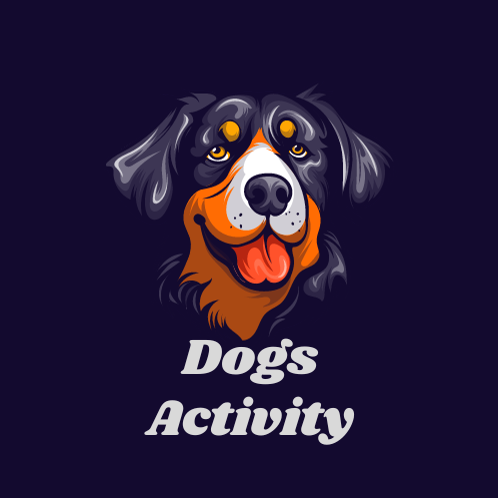
Dogs are beloved members of our families, and as responsible pet owners, we must ensure their well-being, including their nutrition. Occasionally, circumstances arise that can disrupt a dog’s regular feeding schedule. It’s natural to wonder, “How long can a dog go without eating?” In this comprehensive guide, we will explore the various factors that influence a dog’s ability to endure a period without food, as well as the potential risks and consequences associated with prolonged hunger.
Chapter 1: The Basics of Canine Nutrition
Before delving into how long a dog can go without eating, it’s important to understand the role of nutrition in a dog’s life.
1.1. Nutritional Requirements
Dogs require a balanced diet to thrive, just like humans. Their nutritional needs include protein, fats, carbohydrates, vitamins, minerals, and water. These nutrients provide energy, support growth, maintain bodily functions, and keep the immune system strong.
1.2. The Importance of Regular Feeding
Consistent feeding is essential for a dog’s overall health and well-being. Skipping meals or extended periods without food can lead to malnutrition, weakness, and various health issues.
Chapter 2: Factors Influencing a Dog’s Ability to Go Without Eating
The duration a dog can go without food varies depending on several factors. Let’s explore these factors in detail.
2.1. Age
Puppies have higher energy needs due to growth, making them less tolerant of food deprivation compared to adult dogs. Senior dogs may also have special dietary considerations.
2.2. Size and Breed
Small breeds tend to have higher metabolisms and may require more frequent meals. Larger breeds can typically endure longer periods without food.
2.3. Health and Body Condition
Dogs with pre-existing health conditions, such as diabetes or liver disease, may have less tolerance for not eating. Malnourished dogs are also at higher risk when food is scarce.
2.4. Fat Reserves
A dog’s body fat percentage can influence their ability to go without food. Dogs with a healthy weight and adequate fat reserves can endure longer periods without eating.
2.5. Hydration
Water intake is as crucial as food. Dehydration can exacerbate the negative effects of food deprivation.
Chapter 3: Short-Term Hunger Tolerance
Dogs can typically tolerate short periods of hunger, but the exact duration varies.
3.1. Normal Eating Habits
In general, dogs are accustomed to regular feeding schedules. Missing one or two meals might not have significant health consequences for a healthy dog.
3.2. 24-48 Hours
Most healthy adult dogs can go 24-48 hours without eating before it becomes a critical concern. During this time, they may rely on their body fat for energy.
3.3. Monitoring and Hydration
It’s crucial to monitor your dog’s condition during short-term food deprivation and ensure they have access to clean, fresh water.
Chapter 4: The Risks of Prolonged Hunger
Prolonged hunger in dogs can lead to various risks and health issues.
4.1. Malnutrition
Extended periods without food can result in nutrient deficiencies, leading to malnutrition. This can impact a dog’s overall health, growth, and immune system.
4.2. Muscle Wasting
Prolonged hunger may cause muscle wasting, weakening your dog and potentially affecting their mobility.
4.3. Organ Damage
Malnutrition and starvation can harm vital organs such as the liver and kidneys, leading to irreversible damage.
4.4. Weakened Immune System
A weakened immune system makes dogs more susceptible to illnesses and infections.
4.5. Hypoglycemia
Low blood sugar levels, or hypoglycemia, can occur in dogs, leading to weakness, seizures, and even coma.
Chapter 5: Signs of Hunger and Malnutrition
To assess your dog’s condition, it’s crucial to be aware of signs indicating hunger and malnutrition.
5.1. Lethargy
Lack of energy or enthusiasm is a common sign that your dog may be experiencing hunger or malnutrition.
5.2. Weight Loss
Unintentional weight loss is an indicator of malnutrition.
5.3. Weakness
Hunger and malnutrition can lead to muscle weakness and reduced stamina.
5.4. Behavioral Changes
Hunger may cause behavioral changes, such as irritability or increased aggression.
5.5. Vomiting and Diarrhea
Digestive disturbances can occur as a result of food deprivation.
Chapter 6: What to Do When Your Dog Refuses to Eat
If your dog refuses to eat for an extended period, it’s important to take action.
6.1. Consult a Veterinarian
If your dog’s refusal to eat extends beyond 24-48 hours, consult your veterinarian. It could be a sign of an underlying health issue that requires attention.
6.2. Address Underlying Issues
Your veterinarian can diagnose and treat any underlying health problems contributing to your dog’s lack of appetite.
6.3. Encourage Eating
Your veterinarian may recommend dietary changes, special foods, or appetite stimulants to encourage your dog to eat.
6.4. Monitor Progress
Keep a close eye on your dog’s progress and ensure they are returning to a normal eating routine.
Chapter 7: Conclusion
Understanding how long a dog can go without eating is vital for responsible pet ownership. While healthy dogs can endure short periods of hunger, it’s essential to monitor their condition and address any underlying health issues promptly. Prolonged hunger can lead to malnutrition and serious health risks, so consult your veterinarian if your dog consistently refuses to eat. A well-balanced diet and regular feeding schedule are key to ensuring your furry friend’s health and happiness.


